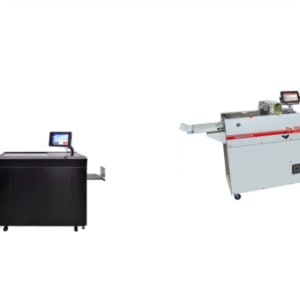In an generation where era is reshaping every nook of the waste management enterprise, automation and statistics-driven structures are at the leading edge of innovation. RFID tracking, GPS-based course optimization, clever containers, and absolutely included systems have become popular in lots of municipalities and personal hauler fleets.
Yet, despite this rapid technological transformation, there remains a steady—and on occasion surprising—reliance on waste guide verification through many waste haulers. At first look, this exercise might seem previous. But for a number of companies, it stays a crucial thing of accuracy, compliance, and operational integrity.
So, why are a few haulers nonetheless manually verifying waste pickups in 2024? Let’s take a deep dive into the position of waste manual verification, wherein it fits into modern-day workflows, and why it’s not going away anytime soon.

What Is Waste Manual Verification?
Waste guide verification refers to the system of physically confirming waste series activities—either by using drivers, field inspectors, or lower back-office personnel—via direct statement or guide information logging.
This ought to consist of:
- Manually checking that waste boxes have been emptied
- Recording field IDs and places
- Documenting overfilled or infected packing containers
- Photographing each pickup for visible proof
- Logging weight or volume estimates with the aid of hand
- Matching tickets or paintings orders with driver logs
While those steps can appear labor-intensive, they are frequently used to validate automated systems, fill gaps in which virtual tracking falls short, or meet precise regulatory necessities.
Why Automation Isn’t Always Enough
The waste enterprise is certainly evolving. Software equipment and sensors are actually able to tracking almost every issue of the pickup lifecycle. Yet, there are crucial motives why complete automation isn’t usually practical or enough.
1. Hardware Limitations within the Field
GPS trackers and RFID tags are fantastically beneficial—once they work. However, harsh conditions, broken tags, and getting old hardware can bring about neglected reads, area errors, or gaps in pickup records. In those cases, a guide check becomes the maximum reliable fallback.
2. Irregular or One-Off Jobs
For custom pickups, emergency requests, or roll-off packing containers located at creation web sites, automation may not be pre-configured to song these specific service kinds. Manual verification ensures accurate billing and documentation with out the need for luxurious software adjustments.
3. Customer Disputes and Proof of Service
Photos, notes, and signatures amassed manually by way of drivers often serve as the maximum convincing evidence in patron disputes. Automated take a look at-ins might confirm that a truck arrived at a place, but handiest a timestamped photo of an emptied bin can show the provider changed into finished.
4. Regulatory Compliance and Audits
Certain municipalities and contracts require physical evidence of series, contamination reports, or manual signatures to meet regulatory duties. Manual procedures provide the “paper trail” (often virtual now) that auditors nonetheless need to peer.
5. Cost Concerns with Full Digitization
Implementing RFID tags on each field, integrating complicated routing platforms, and schooling all personnel on a new device takes time and money. For smaller haulers or the ones working on tight margins, waste guide verification is a fee-effective alternative to complete automation—at the least inside the quick time period.
The Human Element in Waste Verification
While technology is green, there are obligations where human judgment remains advanced. For instance:
- Determining if a bin incorporates non-compliant cloth
- Assessing whether or not an area is safe for series
- Identifying improperly located or blocked packing containers
- Engaging without delay with the purchaser to solve on-website online problems
Manual verification lets in drivers or discipline inspectors to make real-time choices that software by myself can’t reflect. In many instances, the mixture of automation and human input results in the satisfactory service outcomes.
Benefits of Maintaining Manual Verification
Even as haulers undertake extra superior systems, manual verification remains a key piece of the puzzle for numerous motives:
✅ Accuracy in Billing
Manual assessments assist make certain accurate monitoring of overages, overlooked pickups, or additional offerings that may not be meditated in automatic systems.
✅ Operational Oversight
Managers can spot styles or inefficiencies via reviewing driver logs and comparing guide facts towards automatic inputs.
✅ Legal Protection
When disputes get up, haulers can lean on guide documentation (photos, notes, signatures) to protect towards claims of carrier failure.
✅ Customer Satisfaction
Manually verified notes and driving force remarks can help tailor carrier to particular customer wishes—specially in excessive-touch commercial money owed.
When to Use Waste Manual Verification (and When Not To)
It’s vital to strike the right balance. While guide verification gives several advantages, it shouldn’t be utilized in each situation—in particular while digital options are available and reliable.
Use guide verification for:
- First-time pickups or brief bins
- Overflow or infection documentation
- Municipal or commercial contract compliance
- Disputed pickups or client escalations
- Areas wherein RFID or GPS signals fail
Avoid relying on guide verification whilst:
- Scalable automation (RFID, barcode, or GPS) is extra cost-effective
- Errors or inconsistencies arise because of human oversight
- Repetitive tactics can be handled digitally with better accuracy
The fine systems permit for a hybrid version—wherein automation handles the bulk of the paintings, and manual tests act as a best assurance tool.
How Today’s Technology Supports Manual Processes
It’s a false impression that waste guide verification approach going lower back to clipboards and paper bureaucracy. Modern solutions blend manual facts seize with virtual equipment for a extra efficient workflow.
For example:
- Mobile apps permit drivers to photograph packing containers, seize digital signatures, and log notes in real time.
- Cloud-based platforms mixture guide entries into dashboards for smooth evaluate.
- Automated indicators can prompt guide checks whilst anomalies are detected (e.G., a bin marked empty but nonetheless complete).
- Smartphones with barcode scanners allow brief verification without RFID infrastructure.
In brief, manual verification goes digital—just not disappearing.

How It Fits Alongside Waste and Recycling Software
The modern waste industry runs on waste and recycling software program that covers direction planning, purchaser billing, and motive force monitoring. The first-rate platforms are designed to accommodate guide verification methods as part of their workflow.
That method haulers can:
- Sync guide motive force entries with automatic information
- View snap shots and notes along pickup logs
- Trigger comply with-up moves primarily based on field observations
- Maintain provider transparency without sacrificing flexibility
Even in case your gadget is optimized for automation, it’s smart to build in the ability to manually affirm exceptions, customize provider for specific customers, and keep the human contact wherein it subjects most.
This is in which waste manual verification remains applicable—even in a software program-pushed international.
Final Thoughts: It’s Not Either/Or—It’s Both
The destiny of waste management is undeniably virtual. Automation, synthetic intelligence, and smart sensors are already remodeling the industry. But generation isn’t perfect, and now not each business or situation blessings from overall digitization.
Waste guide verification keeps to provide a realistic, bendy, and value-powerful solution for haulers in search of accuracy, compliance, and manage of their day by day operations. Whether you’re a small hauler simply beginning to digitize or a multi-nearby fleet jogging advanced software, the capacity to validate, report, and respond manually still adds fee.






